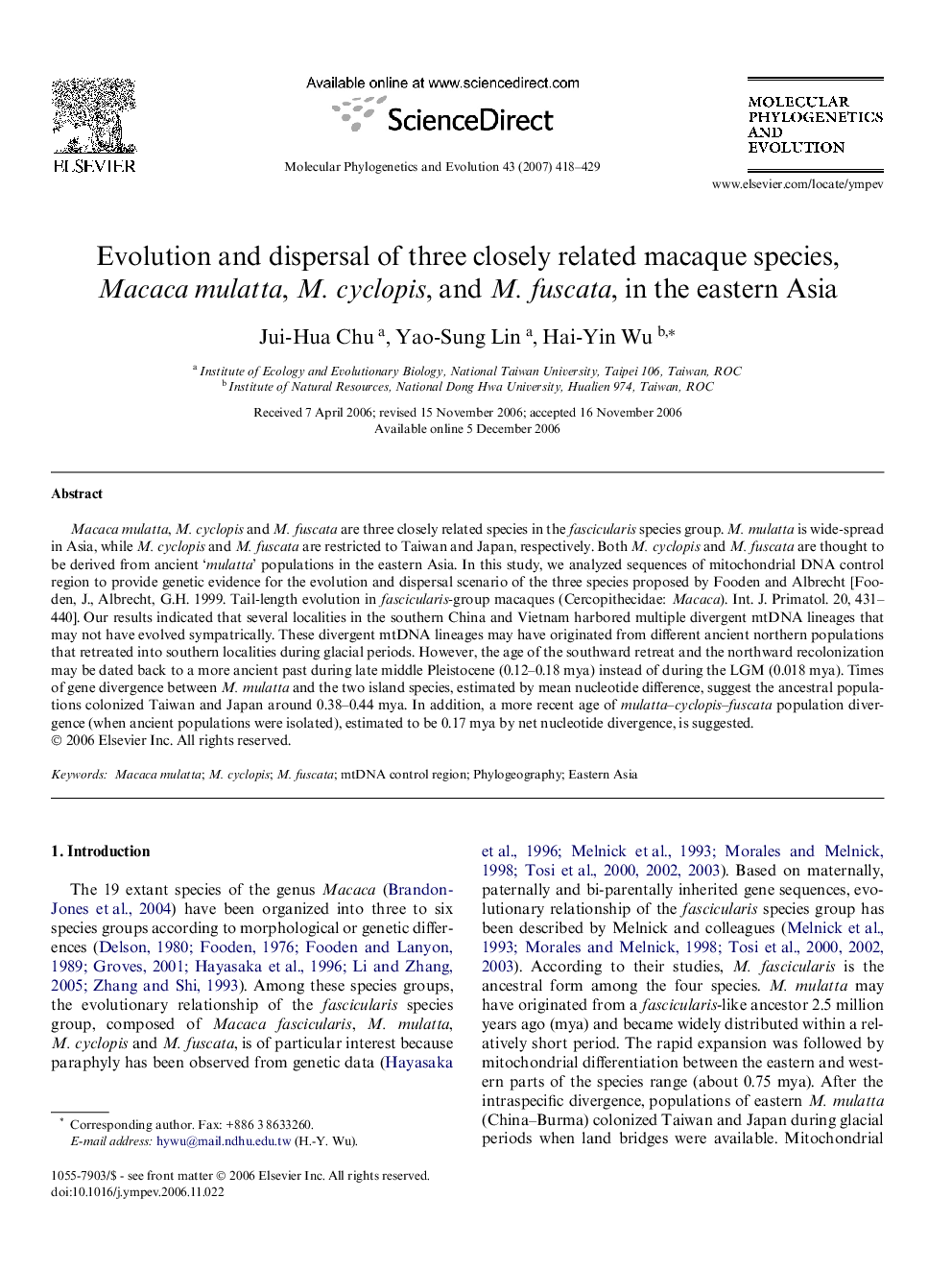| Article ID | Journal | Published Year | Pages | File Type |
|---|---|---|---|---|
| 2835871 | Molecular Phylogenetics and Evolution | 2007 | 12 Pages |
Macaca mulatta, M. cyclopis and M. fuscata are three closely related species in the fascicularis species group. M. mulatta is wide-spread in Asia, while M. cyclopis and M. fuscata are restricted to Taiwan and Japan, respectively. Both M. cyclopis and M. fuscata are thought to be derived from ancient ‘mulatta’ populations in the eastern Asia. In this study, we analyzed sequences of mitochondrial DNA control region to provide genetic evidence for the evolution and dispersal scenario of the three species proposed by Fooden and Albrecht [Fooden, J., Albrecht, G.H. 1999. Tail-length evolution in fascicularis-group macaques (Cercopithecidae: Macaca). Int. J. Primatol. 20, 431–440]. Our results indicated that several localities in the southern China and Vietnam harbored multiple divergent mtDNA lineages that may not have evolved sympatrically. These divergent mtDNA lineages may have originated from different ancient northern populations that retreated into southern localities during glacial periods. However, the age of the southward retreat and the northward recolonization may be dated back to a more ancient past during late middle Pleistocene (0.12–0.18 mya) instead of during the LGM (0.018 mya). Times of gene divergence between M. mulatta and the two island species, estimated by mean nucleotide difference, suggest the ancestral populations colonized Taiwan and Japan around 0.38–0.44 mya. In addition, a more recent age of mulatta–cyclopis–fuscata population divergence (when ancient populations were isolated), estimated to be 0.17 mya by net nucleotide divergence, is suggested.
